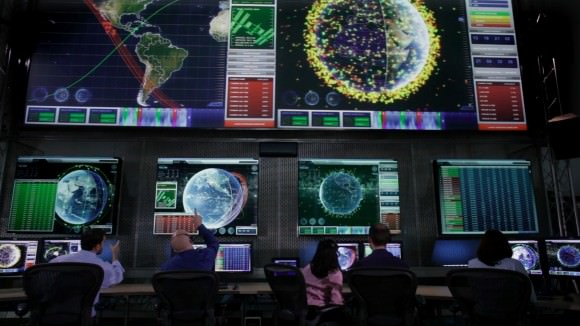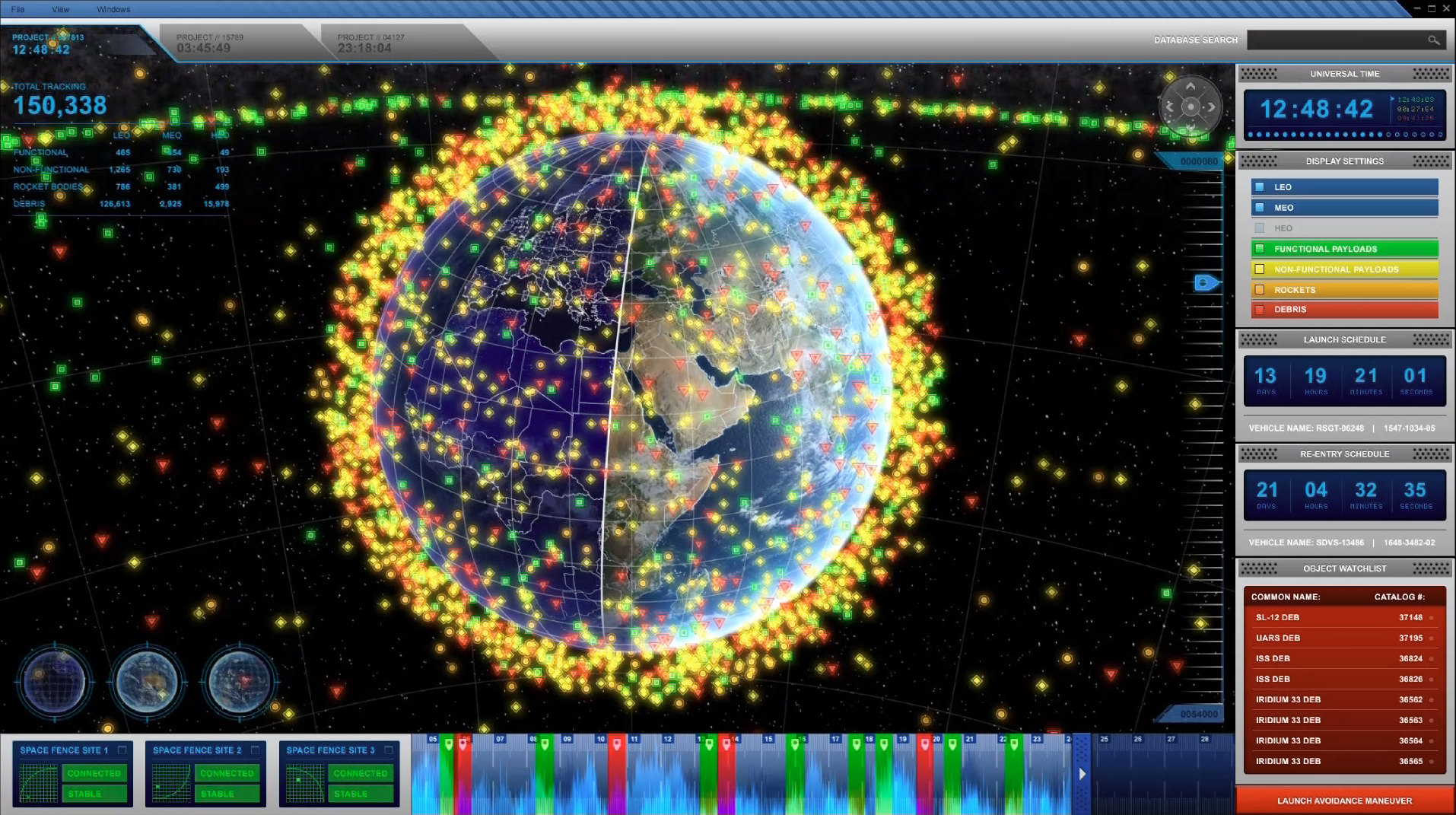[/caption]
Several times a year, the International Space Station needs to perform Debris Avoidance Maneuvers to dodge the ever-growing amount of space junk hurtling around in Earth orbit. Additionally, our increased dependence on satellites for communications and navigation is threatened by the risk of potential collisions with space debris. The existing system for finding and tracking objects, the Air Force Space Surveillance System, or VHF Fence, has been in service since the early 1960s, and is sorely out of date. But a prototype system called Space Fence has now been tested in a series of demonstrations, and successfully tracked more and smaller pieces of debris than the current system.
“The current system has the ability to track about 20,000 objects,” Lockheed Martin spokesperson Chip Eschenfelder told Universe Today, “but there millions of objects out there, many of which are not being tracked. Space Fence will find and catalog smaller objects than what are not being tracked now.”
Space Fence will use powerful new ground-based S-band radars to enhance the way the U.S. detects, tracks, measures and catalogs orbiting objects and space debris with improved accuracy, better timeliness and increased surveillance coverage, Lockheed Martin said. In recent tests, the Space Fence prototype proved it could detect more and smaller objects than the current system.
Space debris includes non-operational satellites, and leftover rocket parts from launches. Basically, every time there is a launch, more debris is created. Collisions between the current debris create even more pieces that are smaller and harder to detect. With the debris traveling at lightning-fast orbital speeds, even pieces as small as a paint chip could be deadly to an astronaut on EVA at the space station, or could take out a telecommunications or navigation satellite.

The developers of Space Fence say the new system will revolutionize what’s called ‘space situational awareness,’ which characterizes the space environment and how it will affect activities in space.
“Space Fence will detect, track and catalog over 200,000 orbiting objects and help transform space situational awareness from being reactive to predictive,” said Steve Bruce, vice president of the Space Fence program. “The Air Force will have more time to anticipate events potentially impacting space assets and missions.
The current system has tracking locations in the US only and has a huge ‘blind spot’ by not supplying information about debris in the southern hemisphere. But Space Fence will provide global coverage from three ground-based radar located at strategic sites around the world.
On February 29, 2012, the Air Force granted its final approval of Lockheed Martin’s preliminary design, and they expect the new system’s initial operational capability to be sometime in 2017.
“The successful detection and tracking of resident space objects are important steps in demonstrating technology maturity, cost certainty and low program risk,” said Bruce in a statement. “Our final system design incorporates a scalable, solid-state S-band radar, with a higher wavelength frequency capable of detecting much smaller objects than the Air Force’s current system.”
For more information see the Space Fence website, and NASA’s Orbital Debris Program Office.


Sounds like a losing battle. Even if we track all of it, there may be so many that we can’t dodge them all. What we really need is a space broom.
Or a giant vacuum cleaner like in SpaceBalls!
Awesome Spaceballs drop!
You got it. However before we try to clean up, we’ve got to find the mess! This system sounds like it will make tracking and categorizing debris (by risk level?) much easier. The problem remains: once we know where all the junk is, how do we get rid of it?? Remote operated “satellite crushers” which would collect debris and either incinerate it with a high powered laser, direct it into the mesosphere to burn up, or push it out of orbit towards the sun would be ideal, but I don’t think all the space faring nation in the world would agree that having such a device would not constitute weaponization of space. If it can destroy defunct and disabled satellites, it can destroy operating ones too. It’s a tough line to walk right now.
Incinerating debris wouldn’t really work, because the debris will still exist (it’ll just be in more pieces – potentially a bigger problem than before) and it would be too costly too – something has to power that laser.
Also, if I may just address a common misconception: you can’t simply “nudge” an object out of low earth orbit into the Sun – objects won’t spiral outwards (or inwards) within a gravity well without an outside force (besides gravity) being applied to them – i.e. a rocket. And given that, it would be understandably far too costly to boost all the debris out of Earth’s orbit.
As far as I understand, the only way to get rid of debris that scientists agree will work is what you mentioned second – push debris into the atmosphere where it’ll safely vaporise (or, for the bigger pieces, land in the ocean).
The difficulty is reaching the piece of debris to do that. You have to match its orbit first, which takes a lot of fuel. Given how many pieces of debris exist, that’s an expensive task. Some sort of “net” would be a better idea, but you need a netting material that can catch objects travelling at immense velocities…
Those are some pretty swanky-looking GUIs in that control room (and that’s a lot of movie-trailer-like special effects in that promo video)
I didn’t know something like space debris tracking could be so sexed-up 😛